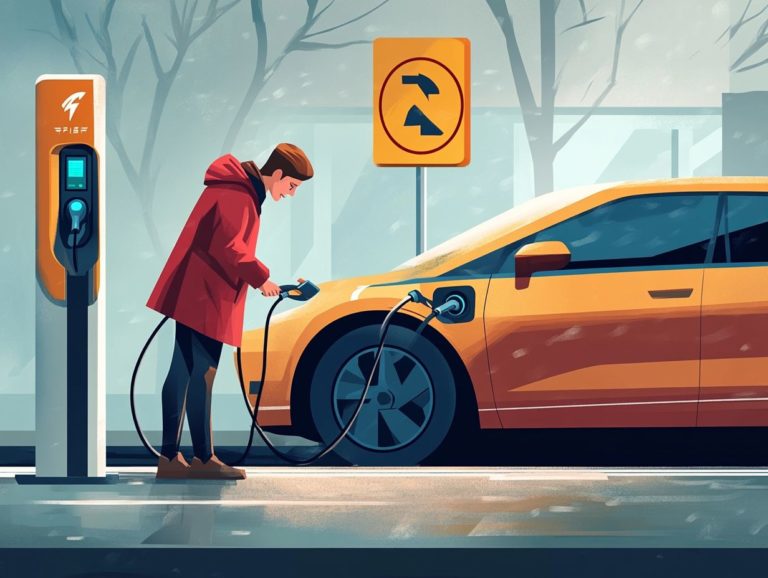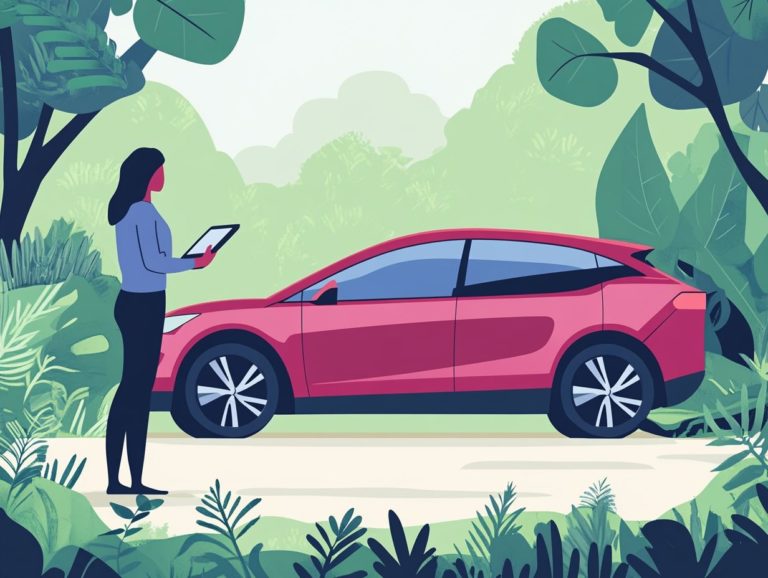What Should I Know About EV Driving Range?
Electric vehicles (EVs) are transforming the landscape of transportation, yet one question often lingers: what about driving range?
Understanding how far you can journey on a single charge is crucial for any EV owner or potential buyer. This article delves into the complexities of EV driving range, examining essential factors that affect it, from battery capacity to the impact of weather conditions.
You ll find expert tips for maximizing your range, comparisons of leading EV models, and a glimpse into the future of battery technology advancements. Whether you re just stepping into the world of electric driving or seeking to enhance your experience, this guide is filled with valuable insights to help you navigate your EV journey with confidence.
Contents
- Key Takeaways:
- Understanding EV Driving Range
- Factors Affecting EV Driving Range
- Maximizing EV Driving Range
- Comparing EV Driving Ranges
- Future of EV Driving Range
- Frequently Asked Questions
- What is range anxiety?
- What affects the driving range of an EV?
- How do I find charging stations?
- What Should I Know About EV Driving Range?
- How is EV driving range determined?
- What is the average EV driving range?
- Can I extend the range of my EV?
- Is range anxiety a real concern for EV drivers?
- How can I find out the EV driving range for a specific model?
Key Takeaways:
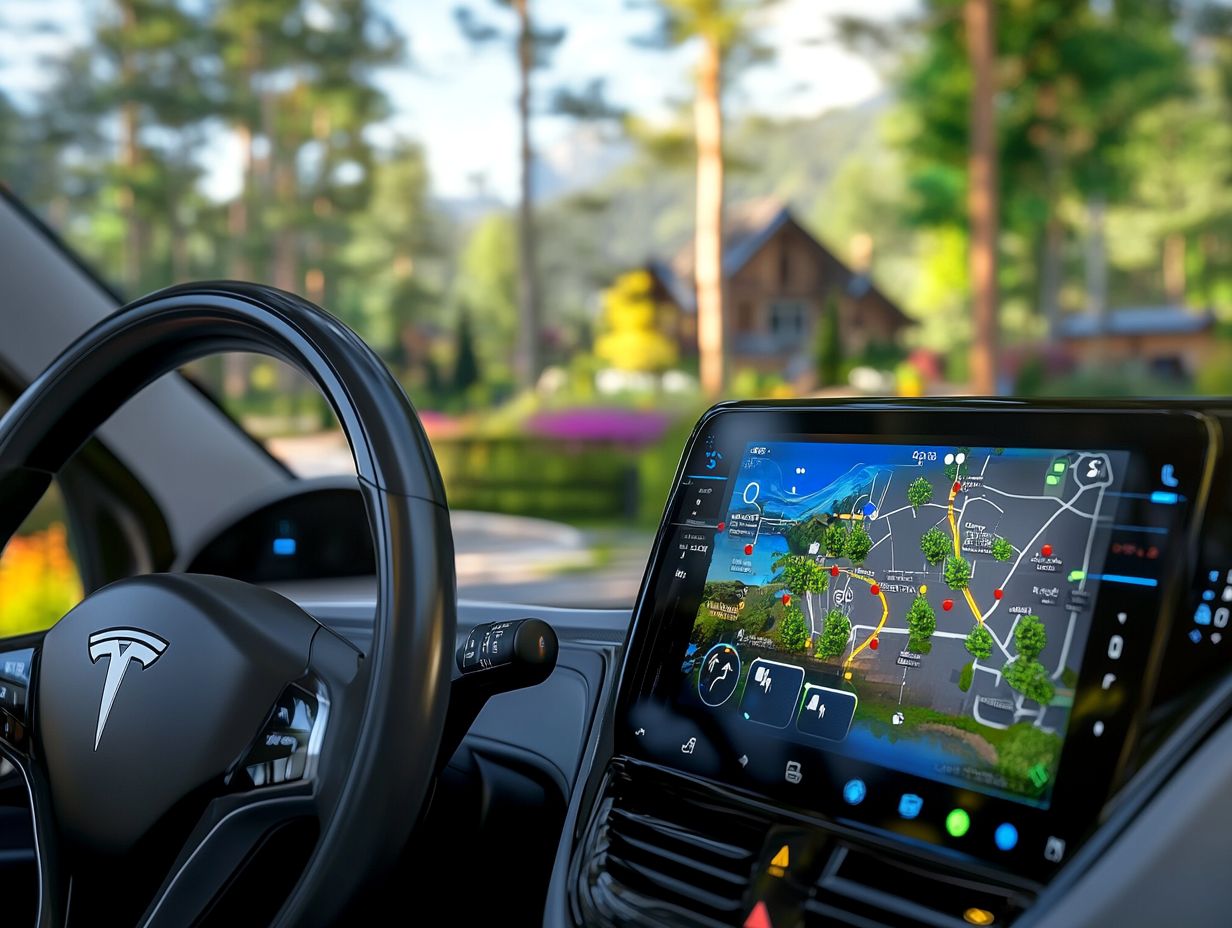
- Choose a model with a larger battery or cutting-edge efficiency to boost your driving range!
- Plan your routes and adjust your driving techniques to maximize range in different weather and terrain conditions!
- Research efficient driving techniques and strategic charging methods to extend your EV’s driving range!
Understanding EV Driving Range
Grasping the nuances of what is the range of an electric vehicle is essential for both new and seasoned electric vehicle (EV) owners. This factor significantly influences the usability and practicality of these cutting-edge modes of transport.
EV driving range refers to the distance an electric vehicle can cover on a single charge. It is shaped by various factors, including battery capacity, driving conditions, and how well the car uses energy.
As the electric vehicle market expands, manufacturers are placing greater emphasis on optimizing driving range. This focus helps satisfy consumer expectations and elevates the overall experience of driving electric vehicles.
What is EV Driving Range?
EV driving range refers to the maximum distance you can travel in an electric vehicle on a single battery charge. This largely depends on the battery capacity and the vehicle’s energy efficiency.
The larger the battery capacity, usually measured in kilowatt-hours, the further you can potentially go before needing to recharge. However, the efficiency of the electric powertrain is equally important.
How effectively the vehicle converts stored energy into actual movement directly influences its driving range. Charging times can vary as well, making it essential for you to plan your journeys thoughtfully.
When evaluating performance, comparing EVs with traditional gasoline vehicles can be beneficial. While gas cars are often assessed in miles per gallon, transitioning that understanding to electric efficiency reveals significant advantages in energy consumption.
Factors Affecting EV Driving Range
The driving range of an electric vehicle is shaped by many elements, such as battery capacity, energy efficiency, driving conditions, and external factors like weather and terrain.
By grasping these factors, you can unlock the full potential of your EV! As electric vehicles gain popularity, the importance of these variables becomes increasingly clear, especially for those who depend on their EVs for daily commutes or commercial activities.
Dive into the world of electric vehicles today and discover how far you can go on a single charge!
Battery Capacity and Efficiency
Battery capacity is key to understanding the driving range of electric vehicles. It relates to the amount of energy stored, usually measured in kilowatt-hours (kWh).
A higher battery capacity means more energy storage, allowing for longer journeys between charges. Modern electric vehicles typically have battery capacities from 40 kWh to over 100 kWh, reflecting major technological advancements.
Innovations like lithium-ion and solid-state batteries offer unique benefits. Lithium-ion batteries are popular because they have a great weight-to-energy ratio, improving range and energy efficiency.
Solid-state batteries promise even better efficiency by increasing energy density and reducing safety risks. These advancements show how battery capacity affects not just distance but also energy efficiency.
Weather and Terrain
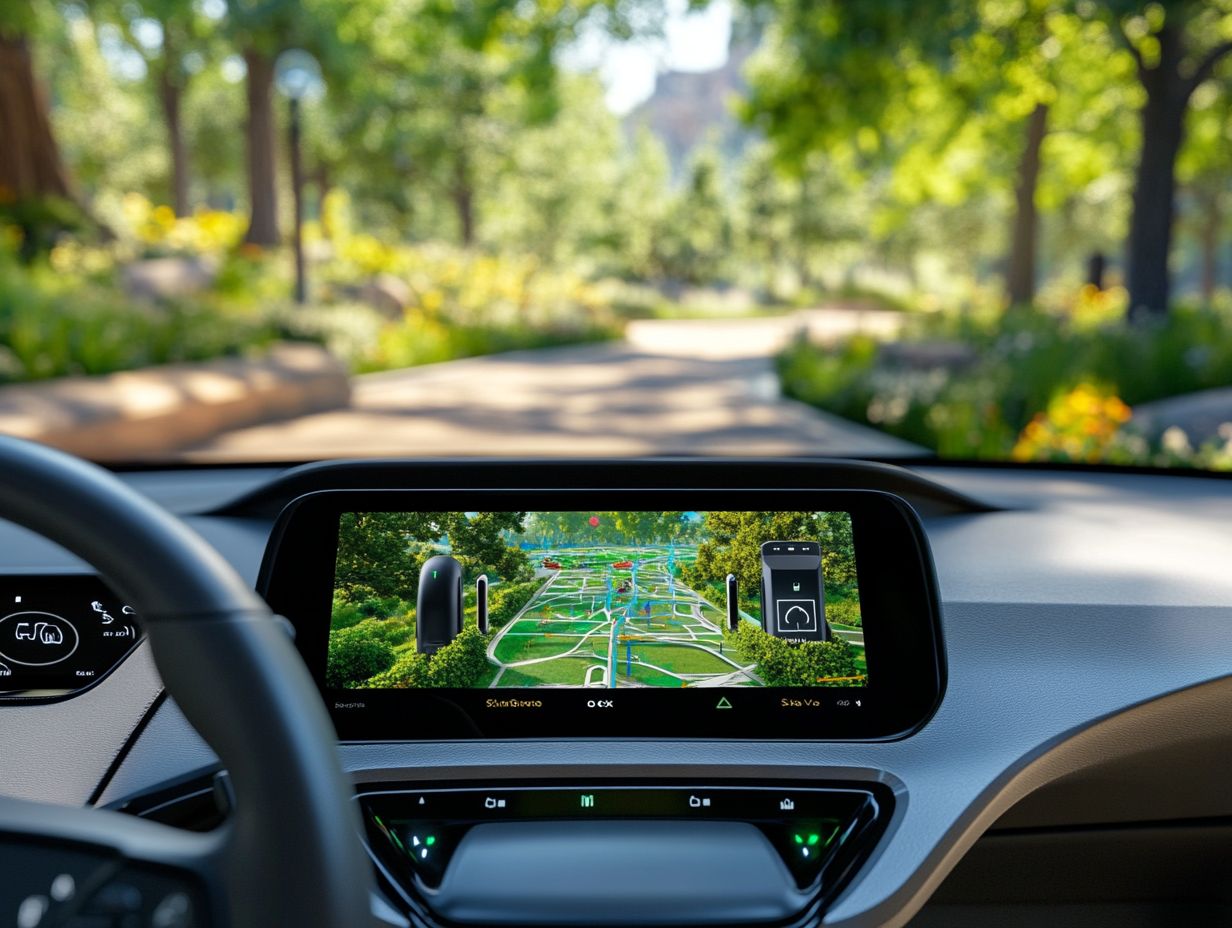
Weather and terrain greatly affect your electric vehicle’s performance and driving range. They impact energy consumption and overall efficiency.
Extreme temperatures can reduce battery efficiency, decreasing your effective driving range. For instance, high heat can damage batteries, while cold weather may require extra energy to keep systems running.
Driving on hilly routes also uses more energy due to elevation changes. This can drain your battery faster compared to driving on flat roads.
Understanding these factors is important for you as an EV owner. This knowledge helps maximize your vehicle’s performance.
Maximizing EV Driving Range
Maximizing the driving range of electric vehicles requires effective driving techniques and smart charging strategies. It’s vital for both casual drivers and those using EVs for commercial purposes.
You can enhance energy efficiency and extend your travel distance by using specific practices. A good grasp of charging optimization, including fast charging options, empowers your journeys.
Efficient Driving Techniques
Efficient driving techniques improve your driving range and overall EV efficiency. This benefits both your convenience and environmental sustainability.
Using methods like smooth acceleration can cut your energy use. Instead of sudden starts, gradually increasing your speed helps your electric vehicle use energy more efficiently.
Implementing regenerative braking captures energy lost during stops, turning it back into usable power. This practice significantly helps recharge your battery.
Keeping a steady speed ideally within the manufacturer s recommended range also optimizes performance. This prevents unnecessary energy drain from speed fluctuations.
As these techniques become second nature, your driving experience will improve while helping to lower your vehicle’s carbon footprint. Together, we’re creating a more sustainable future!
Charging Strategies
Implementing effective charging strategies is crucial for maximizing the range of your electric vehicle. Consider the availability of charging stations and fast charging options.
Timing your charging sessions to take advantage of off-peak electricity rates helps you save money and contributes to grid stability. Using public charging stations enhances your flexibility during long trips, allowing you to benefit from the expanding network of accessible chargers in urban and rural areas.
As advancements in charging technology continue to emerge, planning your trips around charging needs becomes manageable, offering quicker and more efficient solutions.
With this infrastructure on the rise, new possibilities unfold for electric vehicle owners, paving the way for a smoother transition to a more sustainable transportation future.
Comparing EV Driving Ranges
When considering the purchase of an electric vehicle, it’s crucial to compare the driving ranges of various models. Knowing this helps you see how these vehicles perform under different conditions and evaluates their efficiency against traditional gasoline cars in terms of fuel economy.
Top EV Models and Their Ranges
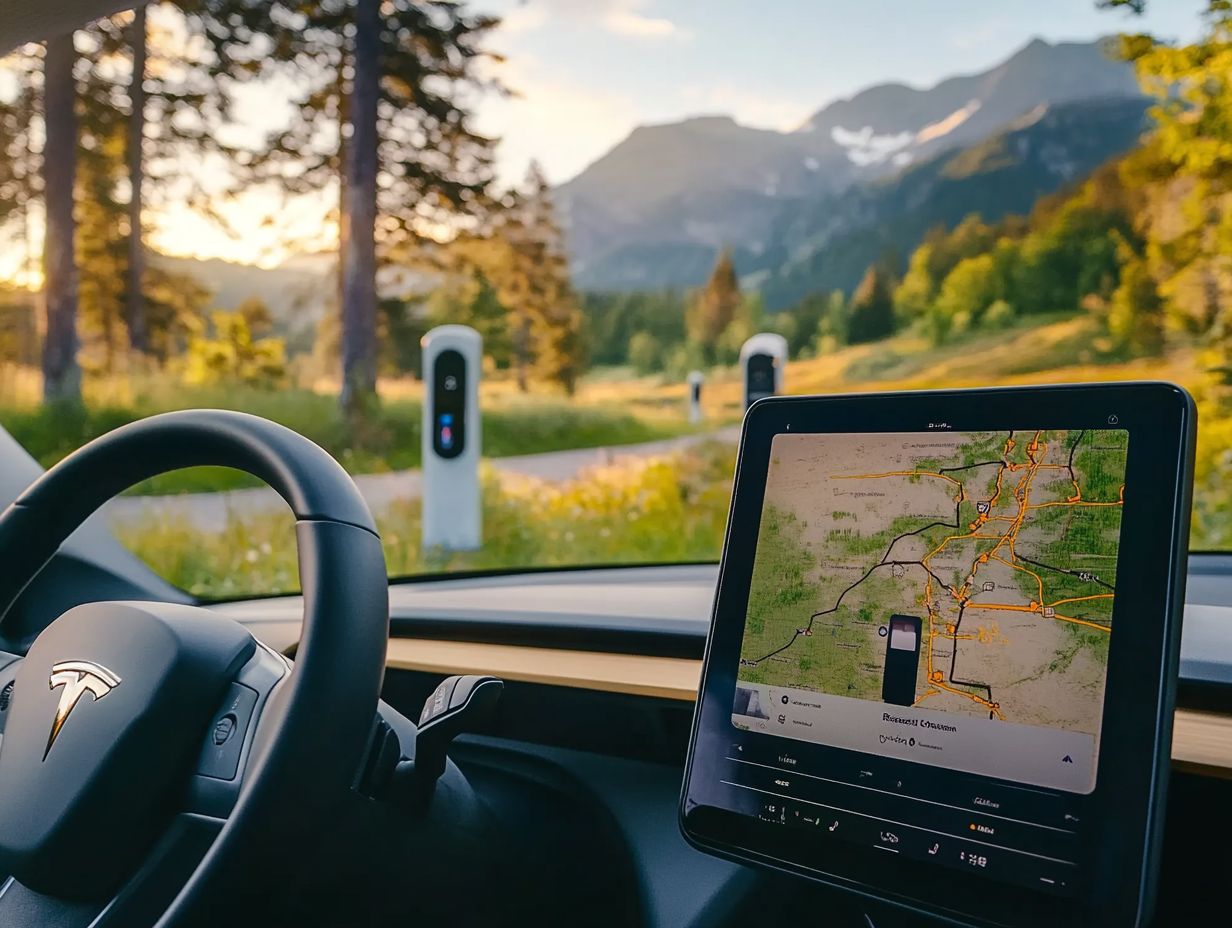
Some leading electric vehicle models on the market today offer impressive driving ranges, as confirmed by EPA testing. This makes them perfect for both personal and commercial use.
These vehicles showcase remarkable advancements in technology while addressing your need for longer journeys without frequent interruptions for charging.
Tesla Model S
Take the Tesla Model S, for instance; it s renowned for its exceptional performance, boasting a range of over 400 miles on a single charge ideal for those long-distance trips.
Ford Mustang Mach-E
The Ford Mustang Mach-E delivers a sporty driving experience with a range of up to 300 miles, catering to those who desire a blend of style and efficiency.
Rivian R1T
If utility is what you seek, the Rivian R1T stands out by combining rugged capability with an impressive range of around 314 miles, proving that electric trucks can be both functional and high-performing.
By comparing these models, you can easily determine which one aligns best with your lifestyle and driving habits.
Future of EV Driving Range
The future of your EV driving range is on the brink of remarkable advancements, driven by new technology aimed at boosting battery capacity and overall efficiency. As researchers and manufacturers strive to redefine clean technology, the outlook is promising: electric vehicles are set to experience significant enhancements in driving range.
This progress will reduce range anxiety for drivers and broaden the appeal and market for electric vehicles, inviting more people to join the electric revolution.
Technological Advancements and Predictions
Technological advancements pave the way for a brighter future for electric vehicles. You can expect improvements in battery capacity and charging infrastructure to significantly enhance your driving experience.
Researchers are exploring solid-state batteries, promising higher energy densities and faster charging times than the conventional lithium-ion batteries. Innovations like rapid charging stations employing ultra-fast charging technology are in development, potentially allowing you to recharge your vehicle in just a matter of minutes.
Experts, including those from the Department of Energy, suggest that integrating renewable energy sources into charging networks could reduce costs and enhance accessibility, making electric vehicles even more appealing. As these advancements evolve, some analysts anticipate that electric vehicles may soon rival traditional gas-powered cars in both range and convenience, driving you toward a future of rapid adoption.
Frequently Asked Questions
Here are some common questions about electric vehicles:
What is range anxiety?
Range anxiety refers to the fear of running out of battery power before reaching a charging station.
What affects the driving range of an EV?
The driving range of an EV can be affected by factors like driving habits, terrain, and weather conditions.
How do I find charging stations?
You can find charging stations using various apps and websites that provide real-time information on charger locations.
Understanding EV ranges is essential for making informed decisions. As technology progresses, the future of electric vehicles looks bright. Consider researching more about specific models and their features!
What Should I Know About EV Driving Range?
Electric vehicle (EV) driving range refers to the distance your EV can travel on a full charge before needing to be recharged. It is an important factor to consider when purchasing an EV.
How is EV driving range determined?
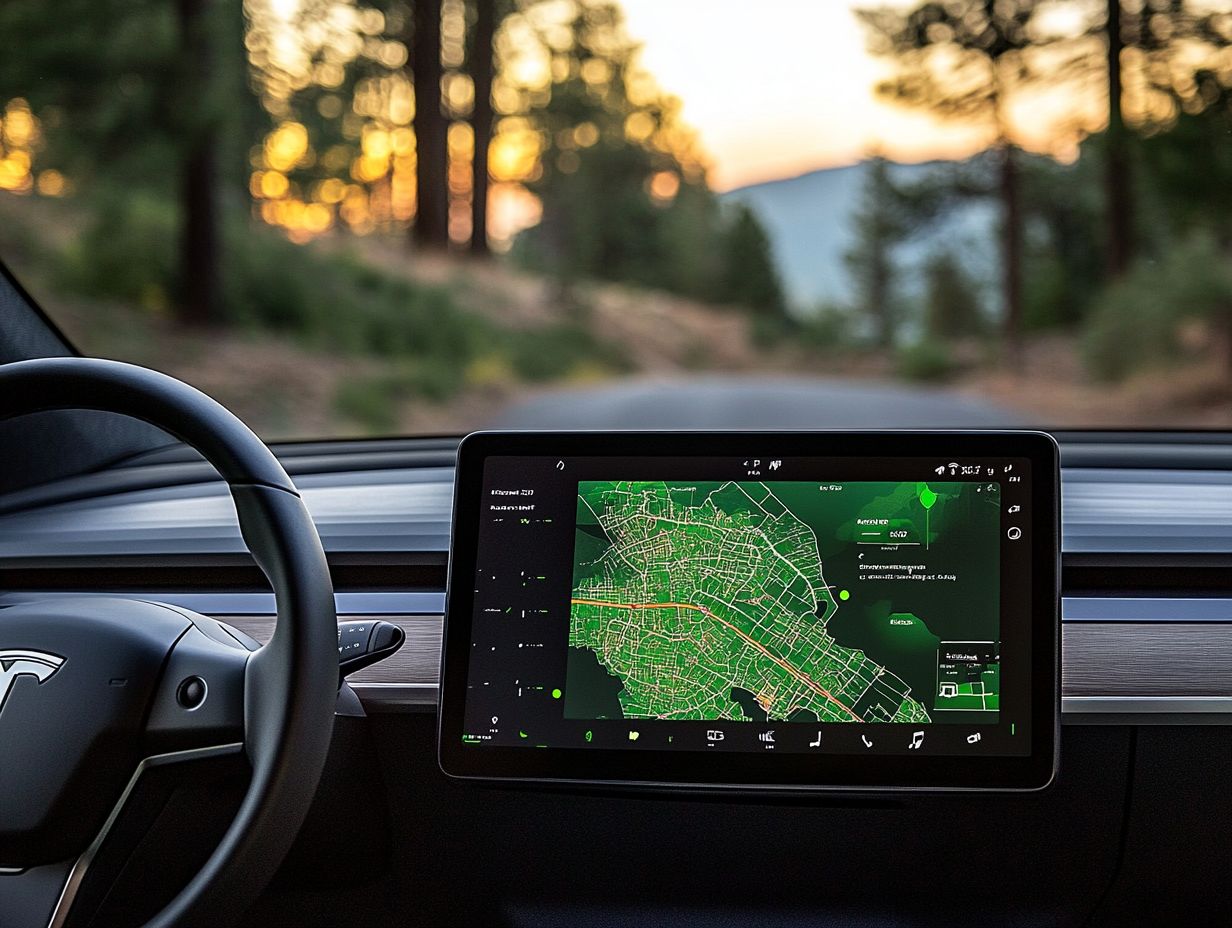
EV driving range is determined by the capacity of the vehicle’s battery and its efficiency. Factors such as weather, terrain, and driving habits can also affect the range.
What is the average EV driving range?
The average EV driving range is around 250 miles on a single charge. However, this can vary greatly depending on the make and model of the EV.
Can I extend the range of my EV?
Yes! You can definitely extend your EV’s range! One way is by using a system that captures energy when you slow down, helping recharge the battery.
Driving in eco mode a setting that helps you use less energy also contributes significantly. Employing high-efficiency driving techniques conserves even more energy!
Is range anxiety a real concern for EV drivers?
Range anxiety, the fear of running out of battery while driving, is a common concern for EV drivers. Luckily, with the increasing number of charging stations and fast charging options, this worry is becoming less of a concern.
How can I find out the EV driving range for a specific model?
The EPA (Environmental Protection Agency) provides an official range estimate for all EV models. You can also check the manufacturer’s website or ask a dealership for more information on the driving range of a specific model.
Excited about going electric? Explore the latest EVs and discover your perfect match today!

